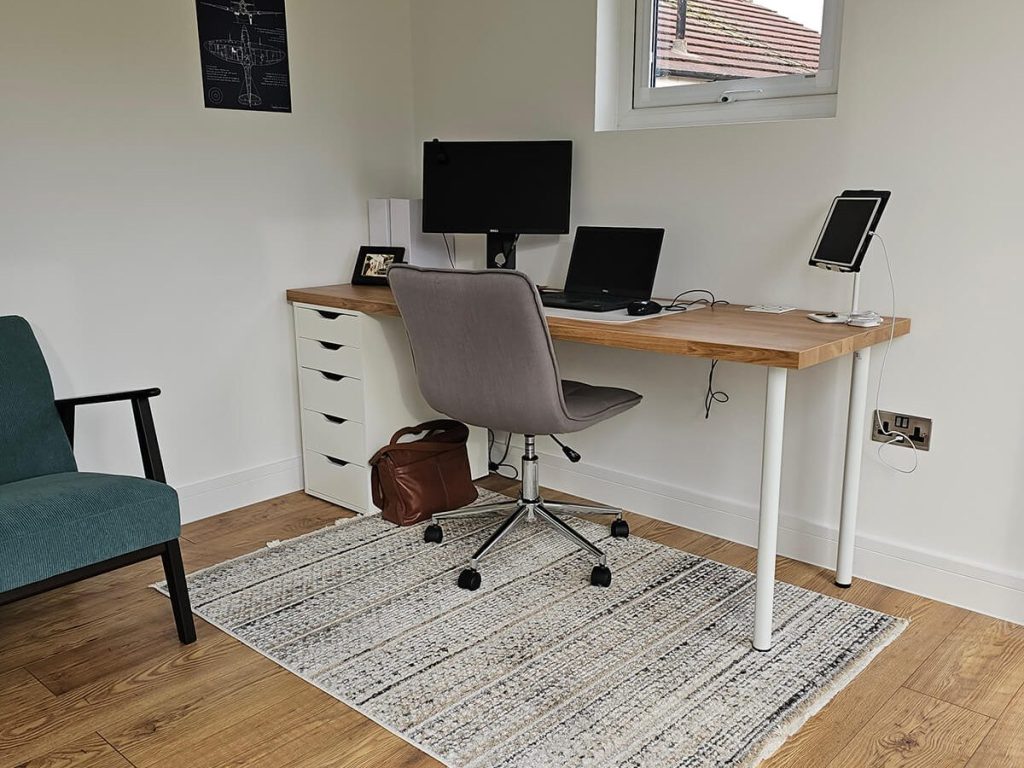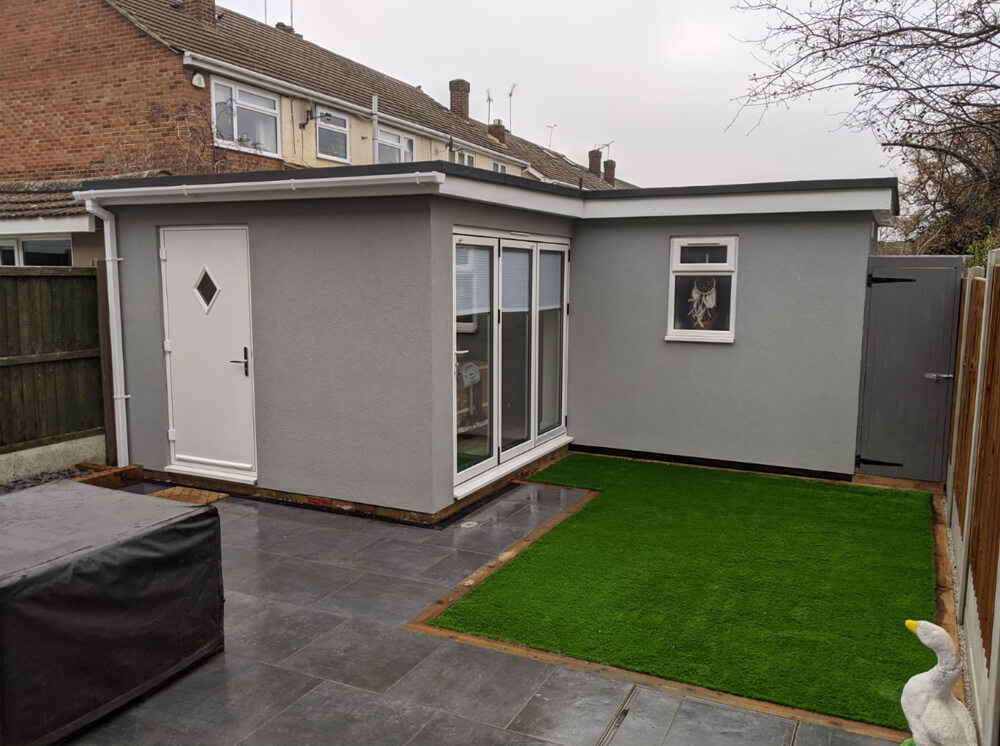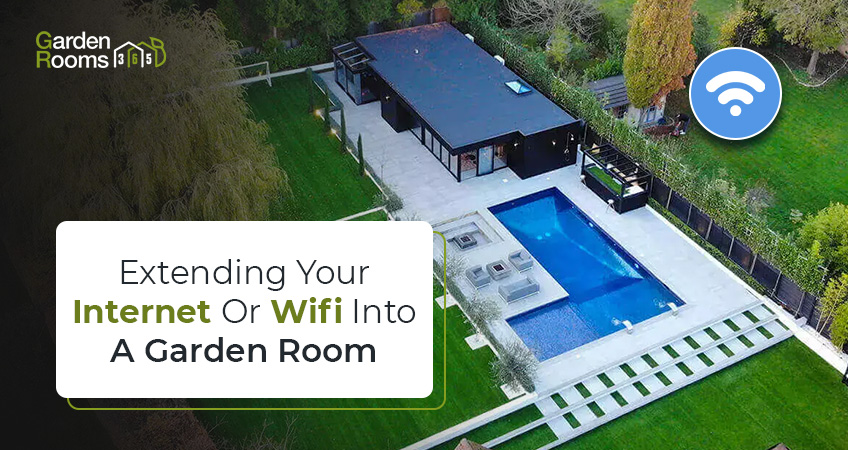The idea of working remotely from a garden office is becoming more popular, offering a perfect blend of productivity and nature. However, reliable WiFi is essential to maintain this productivity. Without it, your garden room office could become more of a hindrance than a haven.
In this blog post, we’ll explore how you can effectively extend your WiFi to your garden office, ensuring a seamless connection for all your remote work needs.
The basics of understanding your WiFi needs and internet connection
Before you start setting up WiFi in your garden office, it’s crucial to understand your specific requirements. The first step is assessing your internet speed needs. For most remote work tasks, a download speed of at least 25 Mbps and upload speed of 3 Mbps is sufficient. However, if your work involves large file uploads or video conferencing, higher speeds may be necessary.
Next, consider the placement of your WiFi router. Ideally, it should be situated as close to your garden office as possible without compromising the signal in your home. Avoid placing the router near walls or large metal objects that could interfere with the signal. If the router placement isn’t optimal, you may need to explore alternative methods to enhance coverage.
Finally, evaluate the surrounding environment of your garden. Trees, buildings, or other structures can obstruct the WiFi signal, so understanding these potential obstacles can help you plan the most effective setup. By being aware of these basics, you’re better equipped to make informed decisions about extending Wi Fi network to your garden office.
Improving WiFi in garden office

Use a wireless Wi Fi extender
One popular solution for extending WiFi is a wireless range extender. These WiFi extender devices boost your existing Wi Fi signal, extending its reach. As they use the same distribution box, you simply plug it into a power outlet between your Wi Fi router and garden office to extend Wi Fi and enhance coverage.
Pros
- Easy installation: Wireless range extenders are typically easy to set up and can be installed without professional help. Most models come with simple instructions, making them a convenient choice for many users.
- Cost-effective: Compared to installing additional wired connections or more complex systems, range extenders are often more affordable, offering a budget-friendly solution to extend Wi Fi coverage.
- Versatile placement: These devices can be placed in various locations within your home, allowing you to find the optimal spot for maximising signal strength and coverage beyond just your garden office.
Cons
- Potential speed reduction: Using a range extender can sometimes result in a decrease in internet speed, as the device retransmits signals, which may add latency and reduce data throughput.
- Limited coverage: While effective in boosting signals, range extenders have a limited radius and might not be capable of reaching all outdoor areas, especially if there are multiple obstacles along the path between the router and garden office.
- Signal interference: Other electronic devices operating on similar frequencies, such as microwaves and cordless phones, can interfere with the extender’s performance, affecting consistency and reliability.
Consider Powerline adapters
Another effective option is Powerline adapters, which utilise your home’s electrical wiring to transmit internet data. Connect one adapter near your router with an Ethernet cable and place the second in your garden office for a stable connection, especially if it’s far from the router.
Pros
- Stable connection: Powerline adapters provide a more stable and reliable connection compared to wireless solutions because they transmit data through wiring rather than airwaves.
- Easy to set up: Similar to range extenders, Powerline adapters are simple to install without the need for professional assistance. They often feature a plug-and-play design.
- No signal loss due to obstacles: Since Powerline adapters use electrical wiring, physical obstacles such as walls and trees do not interfere with the signal, maintaining consistent connectivity.
Cons
- Dependent on wiring quality: The effectiveness of Powerline adapters can be limited by the quality and age of your home’s electrical wiring. Older wiring may result in reduced performance.
- Potential power outlet limitations: With Powerline adapters, the availability and location of power outlets in both your main building and garden office can restrict placement options.
- Not ideal for long distances: While Powerline adapters can cover significant distances, extremely long routes can cause a reduction in speed and performance.
WiFi PtP (Point-to-Point) solutions
If you have a large garden or significant distance between your main building and garden office, a WiFi point-to-point solution may be the best option.
A WiFi Point-to-Point (PtP) solution is a specialised system that creates a wireless access point and connects two distant points through a dedicated link, ensuring stable and fast connectivity across large areas. Unlike traditional WiFi methods that broadcast signals in all directions, a PtP setup focuses on creating a direct communication line between your main router and a receiver in your garden office. This is achieved by using two directional antennas—one at the main building and the other at your garden office—to extend wifi and form a targeted, secured link.
Pros
- High-speed connectivity: With speeds of up to 1 Gbps, PtP solutions offer reliable and fast internet connectivity ideal for tasks such as video conferencing and large file transfers.
- No need for additional wiring: Unlike powerline adapters, which require wiring in place, PtP solutions utilise wireless technology, eliminating the need for additional wiring installation.
Cons
- Higher cost: Compared to other options, PtP solutions can be more expensive due to the specialised equipment and installation required.
- Professional installation needed: Setting up a PtP system requires technical knowledge and expertise, so professional installation may be necessary, adding additional costs.
- Limited flexibility: Once installed, it can be challenging to move or adjust the placement of PtP antennas without professional help.
Ethernet cable
Running an Ethernet cable from your main building to your garden office is another reliable method for improving WiFi coverage. This option may be more time-consuming and require additional resources, but it can provide a stable and high-speed connection.
Pros
- Stable connection: Similar to Powerline adapters, ethernet cables offer a more stable connection compared to wireless solutions as data travels through a physical medium without interference from surrounding obstacles.
- No signal loss: Unlike range extenders that rely on retransmitting signals, there is no signal loss with an Ethernet connection as it is wired into the ethernet port of your router. This provides consistent and reliable coverage.
- No interference: With a wired connection, you do not have to worry about any signal interference from other electronic devices which is a problem that can occur with a wireless connection.
Cons
- Requires professional installation: Running an Ethernet cable between buildings or underground may require professional installation, adding to the overall cost.
- Limited flexibility and mobility: Once installed, it can be challenging to move or adjust the placement of the cable without professional assistance.
- May involve digging and construction: Depending on the distance and terrain between your main building and garden office, installing an Ethernet cable may involve digging trenches or constructing overhead lines.
Future-proofing your garden office WiFi

With technology constantly evolving, it’s wise to future-proof your garden building WiFi setup. One way to do this is by upgrading to WiFi 6, the latest standard offering improved speed and better performance in congested areas. Investing in a WiFi 6 router ensures your WiFi network is ready for the demands of the future.
Regular maintenance of your network is also essential. Keep your router firmware updated and monitor network performance periodically. This proactive approach helps identify and resolve potential issues before they affect your work.
Finally, consider expanding your network’s capabilities as your needs change. Adding smart devices or enhancing security measures can further optimise your garden office setup. By staying ahead of technological advancements, you’ll ensure your garden office remains a productive workspace for years to come.
Conclusion
In summary, creating a reliable WiFi connection for your garden office involves understanding your needs, improving coverage, setting up a dedicated network, and future-proofing your setup. By following these steps, remote workers and tech-savvy homeowners can enjoy a seamless online experience from their garden offices.
Connect with Garden Rooms 365 for your perfect garden office solution
For those considering a garden office upgrade, Garden Rooms 365 offers fully functional bespoke solutions that cater to your needs. With unmatched expertise and years of experience in creating comfortable workspaces, we can help you achieve the perfect balance between work and relaxation.
Reach out for a free quote today and take the first step toward enhancing your remote work experience.



